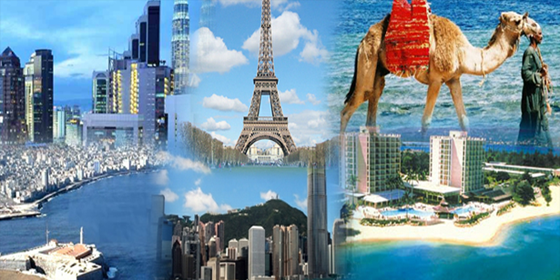2016 was the seventh consecutive year of sustained growth following the 2009 global economic and financial crisis. A comparable sequence of uninterrupted solid growth has not been recorded since the 1960s. As a result, 300 million more international tourists travelled the world in 2016 as compared to the pre-crisis record in 2008. International tourism receipts grew at a similar pace in this period.
“Tourism has shown extraordinary strength and resilience in recent years, despite many challenges, particularly those related to safety and security. Yet, international travel continues to grow strongly and contribute to job creation and the wellbeing of communities around the world”, says UNWTO Secretary-General Taleb Rifai.
International tourist arrivals grew by 3.9% to reach a total of 1,235 million, according to the latest UNWTO World Tourism Barometer. 2017 is expected to be higher still, with up to 4% growth.
46 million more tourists (overnight visitors) travelled internationally in 2016 compared to 2015. 2016 was the seventh consecutive year of sustained growth. International tourism receipts grew too.
By region, Asia and the Pacific (+8%) led growth in 2016. Africa (+8%) enjoyed a strong rebound. In the Americas (+4%) the positive momentum continued. Europe (+2%) showed mixed results, with double-digit growth in some destinations offset by decreases in others. Demand in the Middle East (-4%) was also uneven, with positive results in some destinations, but declines in others.
Results in Europe were rather mixed with a number of destinations affected by safety and security challenges. International arrivals reached 620 million in 2016, or 12 million (+2%) more than in 2015. Northern Europe (+6%) and Central Europe (+4%) both recorded sound results, while in Southern Mediterranean Europe arrivals grew by 1% and in Western Europe results were flat.
Asia and the Pacific (+8%) led growth across regions, recording 24 million more international tourist arrivals in 2016 to total 303 million. Growth was strong in all four sub-regions, with Oceania receiving 10% more arrivals, South Asia 9% more and North-East Asia and South-East Asia both 8% more.
International tourist arrivals in the Americas (+4%) increased by 8 million to reach 201 million. Growth was stronger in South America and Central America (both +6%), while the Caribbean and North America recorded 4% more arrivals.
Africa saw an 8% rebound in international arrivals in 2016 after two troubled years, adding 4 million arrivals to reach 58 million. Sub-Saharan Africa (+11%) led growth, while a gradual recovery started in North Africa (+3%).
The Middle East received 54 million international tourist arrivals in 2016. Arrivals fell by 4% with mixed results among the region’s destinations.
UNWTO
19 June
























































